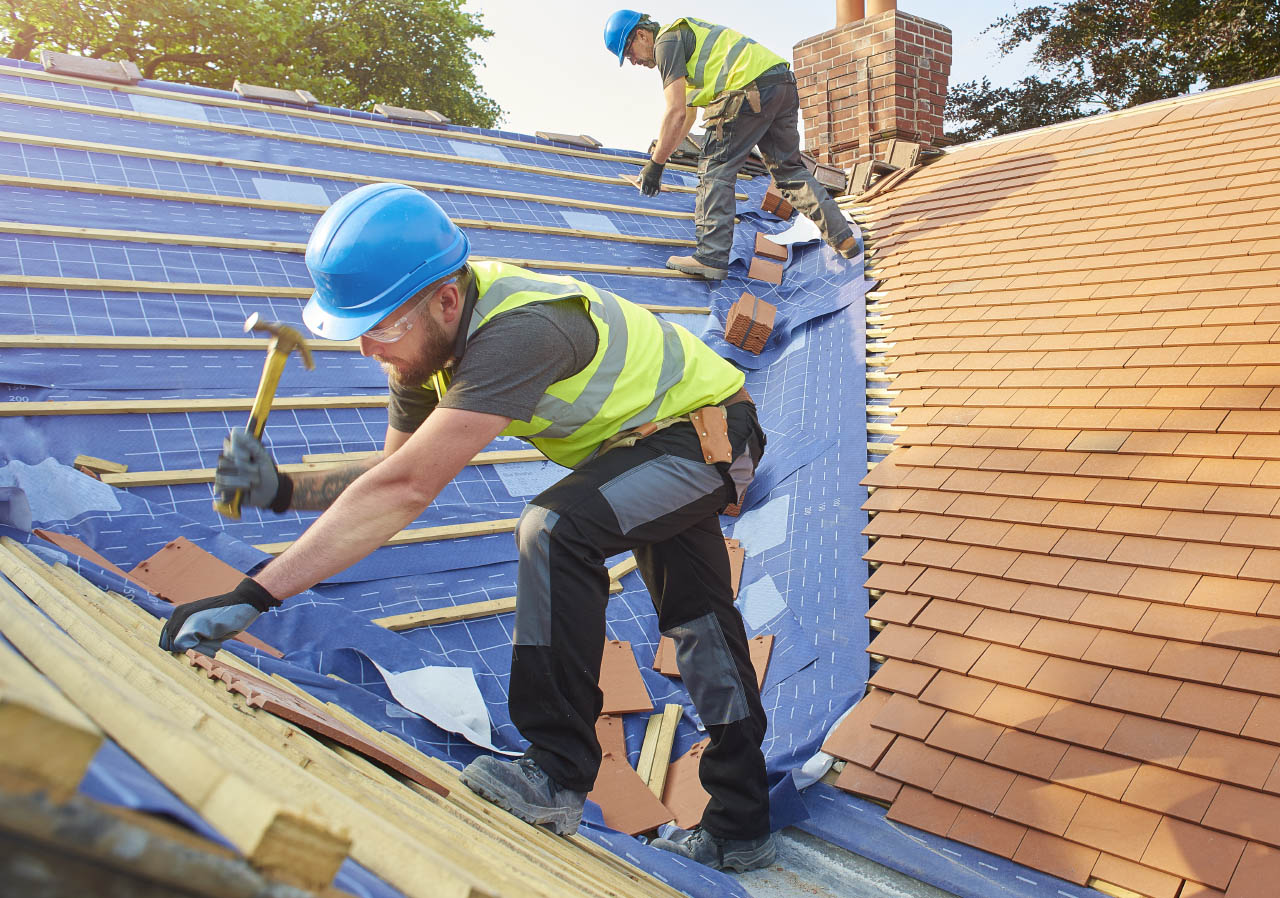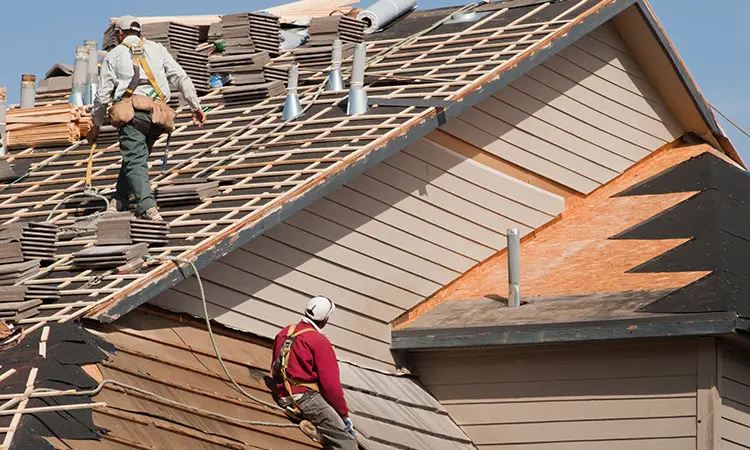Roofers Oahu: Professional Roof Installations and Fixes
Roofers Oahu: Professional Roof Installations and Fixes
Blog Article
Understanding the Different Types of Roofing Systems: A Comprehensive Overview for Homeowners
With a selection of choices-- ranging from the typical gable to the contemporary flat-- each kind presents unique benefits and difficulties that should straighten with the house owner's ecological considerations and specific demands. As we check out the intricacies of numerous roofing system kinds, it ends up being evident that one dimension does not fit all; the right choice might surprise you.
Gable Roof Coverings
Gable roofing systems, identified by their triangular shape, are amongst the most prominent roof styles due to their simpleness and performance in dropping water and snow. This layout includes two sloping sides that meet at a ridge, permitting effective water drainage and reducing the threat of water buildup. The high pitch commonly connected with gable roofing systems enhances their capacity to deal with hefty rainfall, making them suitable for different environments.
Along with their useful benefits, gable roof coverings use visual versatility. They can be adjusted to numerous building designs, from traditional to contemporary homes. The layout can also accommodate added attributes such as dormer windows, which boost all-natural light and air flow in the attic space.
Moreover, saddleback roofs offer adequate space for insulation, adding to energy effectiveness. Homeowners can choose from a range of roof materials, consisting of asphalt roof shingles, steel, and floor tiles, better enhancing customization options.
Despite their advantages, saddleback roofs may need additional support in areas prone to high winds or hefty snowfall. On the whole, the gable roof remains a favored choice due to its mix of capability, durability, and aesthetic allure.
Apartment Roofs
Flat roofing systems are frequently recognized for their minimal layout and functional applications, especially in commercial and industrial settings (oahu roofing). These roof coverings include a almost straight or horizontal surface, which enables for very easy construction and versatile space utilization. While they might do not have the aesthetic charm of angled roofs, level roof coverings provide countless benefits, particularly in metropolitan settings where optimizing area is essential
Among the main advantages of flat roof coverings is their access. Homeowners can make use of the roofing system room for different objectives, such as rooftop yards, terraces, or photovoltaic panel installations. Furthermore, flat roofing systems are normally much more cost-efficient to set up and keep contrasted to their sloped counterparts, as they need less materials and labor.
Nevertheless, level roofing systems do existing particular challenges. Appropriate water drainage is vital to protect against water pooling, which can cause leakages and structural damage. For this reason, picking top notch waterproofing products and regular assessments are crucial for making sure long life. Common materials utilized for level roofs include built-up roof (BUR), changed bitumen, and single-ply membranes, each offering distinctive advantages. On the whole, flat roofings work as a practical and adaptable option for many home owners and companies alike.
Hip Roofing Systems
Hip roofing systems are characterized by their sloped sides that merge on top, forming a ridge. This layout is distinctive from gable roof coverings, as all 4 sides of a hip roofing slope downwards toward the wall surfaces, providing an extra secure structure. The angle of the slopes can differ, permitting convenience in building appearances and capability.
One of the primary benefits of hip roofings is their ability to withstand hefty winds and negative weather. The sloped surface areas allow better water drain, decreasing the risk of leakages and water damage. In addition, hip roofings offer raised attic space, which can be utilized for storage space or perhaps converted into livable areas.
Nevertheless, creating a hip roofing can be much more complex and expensive than less complex roofing types, such as saddleback roofs. The extra product and labor associated with developing the slopes and making certain correct structural stability can lead to greater expenditures. In spite of these downsides, numerous home this content owners favor hip roofings for their resilience, visual appeal, and capacity for power efficiency.
Mansard Roofing Systems
Mansard roof coverings, frequently acknowledged by their unique four-sided design, function two slopes on each side, with the lower incline being steeper than the top. This architectural style, originating from France in the 17th century, is not just cosmetically appealing but practical, as it takes full advantage of the useful room in the upper floors of a building. The steep lower slope enables for even more clearance, making it an ideal choice for lofts or attics, which can be converted into living areas.
Mansard roofings are identified by their convenience, accommodating various architectural styles, from traditional to contemporary. They can be built with different materials, including asphalt roof shingles, slate, or metal, supplying house owners with a variety of alternatives to match their spending plans and choices. Furthermore, the style permits the combination of dormer windows, enhancing natural light and air flow in the top degrees.
Nevertheless, it is necessary to think about the prospective drawbacks. Mansard roofs may call for even more maintenance due to the intricacy of their layout, and their steep slopes can be testing for snow and rainfall overflow. Overall, mansard roofs incorporate sophistication with functionality, making them a popular selection amongst property owners seeking distinct architectural features.
Lost Roofs
As home owners progressively seek simpleness and functionality in their building styles, lost roofings have arised as a prominent selection. Defined by a single sloping airplane, a shed roof offers a minimalist visual that matches numerous home styles, from modern to rustic.
One of the main benefits of a shed roofing system is its simple construction, which typically converts to lower labor and product prices. This design enables reliable water drain, decreasing the threat of leakages and water damage. In addition, the upright slope offers adequate area like this for skylights, enhancing natural light within the interior.
Dropped roof coverings also provide convenience in regards to use. They can be efficiently integrated into enhancements, garages, or outside frameworks like pavilions and sheds. Moreover, this roof covering design can suit various roofing materials, including metal, asphalt shingles, or perhaps eco-friendly roofings, straightening with environmentally friendly campaigns.
Nonetheless, it is crucial to consider regional environment conditions, as heavy snow loads might demand changes to the roof covering's angle or framework. On the whole, lost roofings provide a sensible and cosmetically pleasing alternative for home owners aiming to make the most of functionality without endangering design.
Final Thought


Gable roofings, defined by their triangular shape, are amongst the most popular roof designs due to their simpleness and effectiveness in dropping water and snow. oahu roofing. The high pitch commonly associated with gable roofings boosts their ability to deal with hefty rainfall, making them ideal for various climates
While they may do not have the visual allure of pitched roofs, flat roofings use countless advantages, especially in metropolitan atmospheres where maximizing area is vital.

Report this page